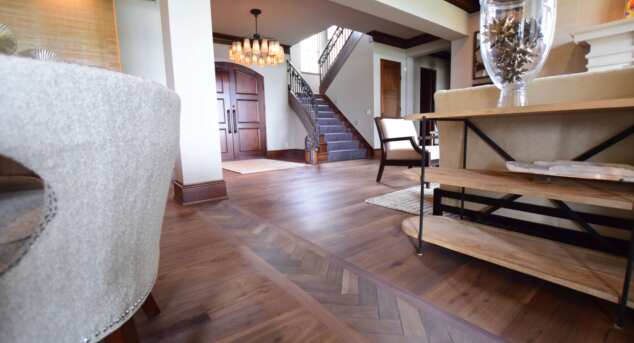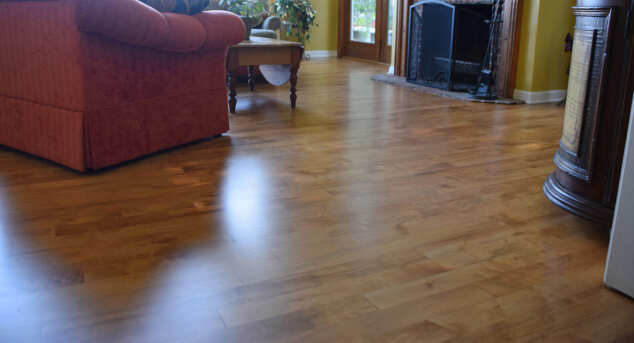Why is Wood Floor Restoration Necessary?
Posted by Aaron Schaalma
Why is Wood Floor Restoration Necessary?
Wood floor restoration is a critical practice for maintaining the integrity, aesthetic appeal, and longevity of wood flooring, particularly in older and historic buildings. This process not only preserves the historical and architectural significance of these structures but also offers economic, environmental, and health benefits. Let's delve deeper into why wood floor restoration is necessary, focusing on historical preservation, maintenance practices, cost efficiency, and environmental impact.
Preserving Historical and Aesthetic Value
One of the primary reasons for restoring wood floors is to maintain the historical and aesthetic value of older buildings. Historic homes and buildings often feature unique architectural details and high-quality materials that are no longer commonly used in modern construction. Restoring these floors helps preserve the authenticity and charm of these structures.
In a project in Neenah, for instance, a home built in the early 1900s underwent a wood floor restoration using a hard wax oil finish, specifically Rubio Monocoat. This finish not only protected the wood but also gave it a hand-rubbed oil appearance, enhancing its historic look. Such finishes allow for color customization while retaining the original character and appeal of the historic house.
Extending the Lifespan of Wood Floors
Regular wood floor restoration significantly extends the lifespan of these surfaces. Over time, wood floors can suffer from wear and tear, including scratches, dents, and fading. Restoration practices such as refinishing and recoating can revive the wood’s appearance and durability.
Proper maintenance, including managing indoor humidity and temperature, is crucial. Wood floors expand and contract with changes in humidity, which can stress the fasteners and lead to damage. Regular maintenance—re-oiling, re-waxing, or recoating with a film-based finish every 5 to 7 years—helps maintain the floor's stability and appearance. In high-traffic areas or homes with pets, children, or proximity to water, more frequent maintenance may be necessary.
Cost Efficiency Compared to Replacement
Restoring wood floors is often more cost-effective than replacing them. The cost of refinishing is substantially lower than the cumulative costs of removing the old floor, purchasing new materials, and installing the new floor. Generally, restoration costs about one-fourth of the expense of replacing the floor. This makes restoration a more economical choice, preserving the original materials and reducing the financial burden on homeowners.
Impact on Indoor Air Quality
Wood floor restoration can have a positive impact on indoor air quality, particularly when environmentally friendly finishes are used. Products like Rubio Monocoat and Loba Impact penetrating oils are designed to have low volatile organic compound (VOC) emissions, reducing the risk of off-gassing harmful chemicals into the home. This is a significant consideration for maintaining healthy indoor air quality, especially compared to carpet, which can harbor allergens and dust mites.
Environmental Benefits
Restoring wood floors is an environmentally friendly choice. By preserving the existing materials, restoration reduces the demand for new wood, helping to conserve natural resources and reduce deforestation. Moreover, avoiding the disposal of old wood floors in landfills minimizes waste and the environmental impact associated with manufacturing and transporting new flooring materials.
Additionally, using eco-friendly finishes during restoration further reduces the environmental footprint. These finishes are formulated to be less harmful to the environment, providing a sustainable option for maintaining wood floors.
Practical Considerations and Challenges
Restoring wood floors in historic buildings can present unique challenges. It requires careful consideration of the building's history and the types of materials and finishes originally used. For instance, some older homes might have floors with lead-based finishes, which necessitate specialized handling and certification to ensure safety during restoration.
Moreover, maintaining the restored floors involves more than just refinishing; it includes ongoing care to protect the wood from damage. Factors such as the presence of rugs, the frequency of cleaning, and the household’s lifestyle (e.g., whether shoes are worn indoors) all influence the longevity of the restored floors. Regular cleaning and prompt attention to spills and scratches are essential to preserve the restored finish.
Why Wood Floor Restoration is Essential for Older Buildings
Wood floor restoration is essential for preserving the historical and aesthetic value of older buildings, extending the lifespan of wood floors, and providing cost-effective and environmentally friendly solutions. Through proper restoration and maintenance practices, the charm and integrity of historic homes can be maintained for future generations to enjoy. By choosing eco-friendly finishes and adhering to regular upkeep, homeowners can ensure their wood floors remain beautiful, durable, and environmentally responsible.
In summary, wood floor restoration is not just about maintaining a floor’s appearance; it’s about preserving history, promoting sustainability, and ensuring the long-term enjoyment of a home’s unique character. Whether it's a historic mansion in Neenah or a century-old farmhouse, the benefits of wood floor restoration are clear and compelling.



